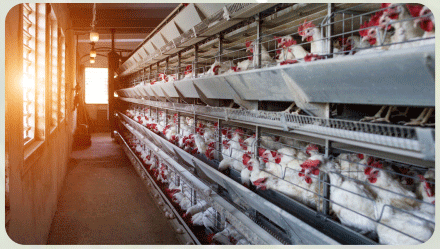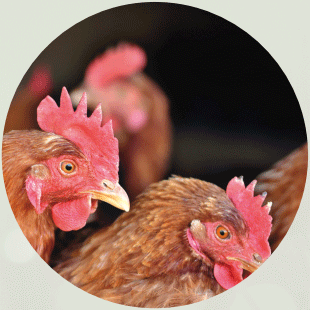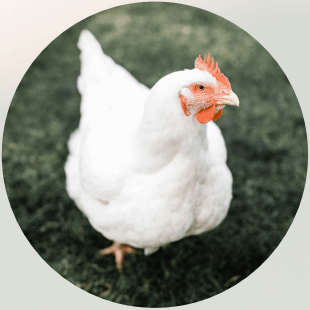
Content sponsored by:
LIPTOSA
Gut Health in Poultry
Published: April 28, 2023
By: Daniel Díaz, Agronomist Engineer, Area Manager Latam
In order to guarantee the world protein supply, the key issues are the improvement in productivity and the efficiency of resources. Intensive poultry farming, being the only one used by all cultures around the world shows the best performance for eggs and meat production, as the main source of animal protein supply.
Current poultry meat and egg production faces a permanent challenge to improve its productivity, including greater efficiency of nutritional and environmental resources to improve its sustainability and to obtain animal health and welfare to optimise production results.
A healthy and well-fed animal is more productive.Lower feed cost is not always more efficient.A correct evaluation of the partial and final results is essential.
In addition to the classical concept of productivity, other important aspects have been added to it: animal health and welfare, the quality and safety of the food chain, environmental impact, and the demands of the final consumer.
Furthermore, in recent years the competition for ingredients in human food, feed manufacturing and the renewable energy production, forces to look for alternatives that improve efficiency and sustainability in livestock production.

Intestinal health
Digestive Health or intestinal health is a very broad concept, since it covers everything that affects the well-being of the digestive process (digestive metabolism and nutrients absorption), the balance of the intestinal ecosystem (microbiota) and the defense against different agents (physical and immune barrier of the animal).
A good health of the digestive system is achieved with a correct digestion of feed, optimal intestinal transit, well balanced microbiota, and the best defense response capacity.
Conditions affecting on digestive health in poultry
There are many factors that affect or place at risk the digestive health of poultry; these factors can be produced by poor environmental conditions and a deficient nutrition management, which can be classified as "non-infectious"; and factors produced by pathogens, usually disease-causing microorganisms, classified as "infectious".
Non-infectious
- Cleaning, disinfection and management of all farm elements (lighting, silos, feeders, drinkers, ventilation systems, litter, floor, slats, cages, etc.)
- Hygienization of feed and drinking water
- Density, temperature, and ventilation
- Feed distribution and free access to the water
- Nutritional unbalances: nutrient density, high salt or protein levels, poor quality of fat... Antinutritional factors of the raw materials (soya, sorghum, cereals), biogenic amines (they damage the gizzard), nondigestible polysaccharides like xylans, glucans or mannans
- Any factor that can cause stress in the animals, mycotoxins (DON), other kind of toxins, an excessive or inappropriate use of antibiotics, vaccinations, transport, etc.

Infectious
Diseases or irritations caused by parasites in the gastrointestinal tract may limit the absorption of nutrients, in addition to being the way of access for many kinds of infections. Eimeria spp. (coccidiosis) infection can be the origin of many unbalances of the digestive system.
Viral infections cause damage to the digestive mucosa, and are associated with immunosuppression, bacterial and protozoa agents.
The development of colibacillosis or salmonellosis is usually the response to intestinal dysbiosis produced by the uncontrolled proliferation of pathogens.
Bacterial or necrotic enteritis is a growing problem, (particularly due to the ban or reduction of growth promoters, the use of anticoccidial vaccines, the increased withdrawal periods for anticoccidials, the diets with low level of corn, the poor fat quality, and the increase of mycotoxins and antinutritional factors in the feed).
The growing of C. Perfringens strains in necrotic enteritis will be favoured by coccidia infections, by the unbalances of fluids absorption and secretion, or by the presence of viruses that destroy mature intestinal cells.

Understanding the importance of digestive health
Preserving an optimal digestive health from birth and throughout the bird's productive cycle is crucial to achieve more efficient feed conversion. Understanding the importance of digestive health
In the case of poultry, from hatching to the first day of age, when the digestive system is still morphologically and microbiologically undeveloped, microbial colonization from the environment, the feed, the handle of birds (be careful with farm staff) begins to establish. Colonization begins in the crop during the first day of age and continues until it reaches the ileum and finally the cecum; microbial flora is established at 2 weeks of age. Something similar happens with morphological development: the maturation of the first enterocytes happens and the brush border of the mucosa is defined within the first hours or days. After 4-7 days the intestinal villi of duodenum are completely developed and during the next weeks will be completed in jejunum and ileum.
The microorganisms present in the digestive system of birds include different bacterial groups, fungi, protozoa, and viruses. The presence of the different species, both in diversity (more than 600 different bacterial species) and in quantity, is not something static; it evolves with the age, along the digestive tract and with the shape and composition of the feed.
In the crop a predominance of lactobacillus with fermenting capacity are located, their growing is associated to the particle size and feed transit rate, working as the first barrier against microbial contamination through lactic acid production. In proventriculus and gizzard, the acid hydrolysis, the beginning of enzymatic attack and the grinding of feed are combined, finding a majority population of lactobacilli from the crop. Next, in the small intestine can be found bacteria of lactobacilli and enterococci groups as the predominant flora, but also E. Coli, Eubacterium, Clostridium, Propionibacterium and Fusobacteria (this population will change with age up to 2 weeks). The cecum is more stable, with slow-growing bacteria, dominated by groups of Bacteroides, Eubacterium, Bifidobacterium, Lactobacillus y Clostridium.
Because the cecum is the most distal portion, acting on the flora is more difficult, so in the case of Salmonella contamination, the cecum can become an important reservoir that is difficult to eradicate.
The saprophytic microbiota works as a protective barrier for the intestine: (against Salmonella, Campilobacter, Clostridium…) by competitive exclusion on the intestinal wall, by the effect of volatile fatty acids (VFA) produced that reduce the intestinal pH and by the production of bacteriocins that inhibit the growth of pathogens.
The intestinal microbiota acts on the feed digestion, providing VFA and or releasing nutrients for the bird; protects the morphology of intestinal villi and promote the development and maturation of the immune system. The modulation of the intestinal microbiota contributes to the improvement of productive performance in poultry.
Most of health problems and losses of productive performance in poultry are the response of intestinal disorders. The alteration of the intestinal microbiota could produce morphological changes that affect the inflammatory response, the enzymatic activity, the nutrient absorption, and the loss of protective barrier.
Tools that promote digestive health
Strategies to follow for a correct intestinal health
- Management, hygiene and biosecurity.
- Physicochemical and microbiological quality of feed (such as particle size, pelleting, gizzard and proventriculus development, fines presence, it is interesting to include coarse flours to improve gizzard function and its barrier effect).
- Physicochemical quality and quantity of water.
- Vaccination program.
- Precision feeding: the ability to supply the amount of nutrients to the bird according to its requirements (aminoacids, enzymes, emulsifiers, diet fibre, vitamins, minerals, microminerals…) and avoid the excess of nutrients that may interfere or those that the bird does not need.
Use of specific feed ingredients or additives: enzymes, probiotics, prebiotics, symbiotics, organic acids, phytobiotics, etc.
- Exogenous enzymes: Exogenous enzymes: improving enzyme degradation activity (protease, amylase) or increase the availability of nutrients that the animal is not able to digest (phytase, xylanase, glucanase...)
- Probiotics: supporting competitive exclusion (lactobacilli, bacilli, and yeasts, among others).
- Prebiotics: modifying the intestinal microbiota, increasing lactic bacteria, improving the competitive exclusion and intestinal motility (oligosaccharides, polysaccharides, lignin).
- Organic acids: they stimulate enzyme activity, reduce pH increasing the mineral solubility, reduce pathogenic microorganisms, etc. They have also different ways of actions and properties depending on the molecular size, pKa, composition, dose, and protection system

Phytogenics...
...derived from plants; there are different types: heterosides, polyphenols, terpenoids and alkaloids; and with different properties: nutritional, antimicrobials, mold inhibitors, antiparasitic, anti-inflammatory, antioxidant and immunomodulatory. In general, phytobiotics are used as extracts or essential oils.
The active ingredients of the plant extracts and essential oils or herbal by products are very different in composition and mode of action, but a simple classification of the properties could be:
- Bactericidal and/or bacteriostatic activity, modulating the intestinal microbiota
- Inhibit the growth of microorganisms
- Nutraceutical effect
- Digestive stimulation: increases feed intake, secretion of digestive juices and enzymes, effects on intestinal motility and digesta transit time
- Anti-inflammatory and antioxidant properties
- Modulating effect on the immune system
- Gut health and integrity-enhancing activity
- Reduction and relief of intestinal stress
LIPTOSA has been working since more than 20 years in the knowledge and quantification of the phytobiotics activity and their properties. In this way it is possible to increase the specificity of the products and enhance their synergistic effect in combination with other groups of additives such as organic acids, prebiotics, or with vitamins and minerals looking for better results.
Related topics:
Authors:
LIPTOSA
Recommend
Comment
Share

Would you like to discuss another topic? Create a new post to engage with experts in the community.

.jpg&w=3840&q=75)